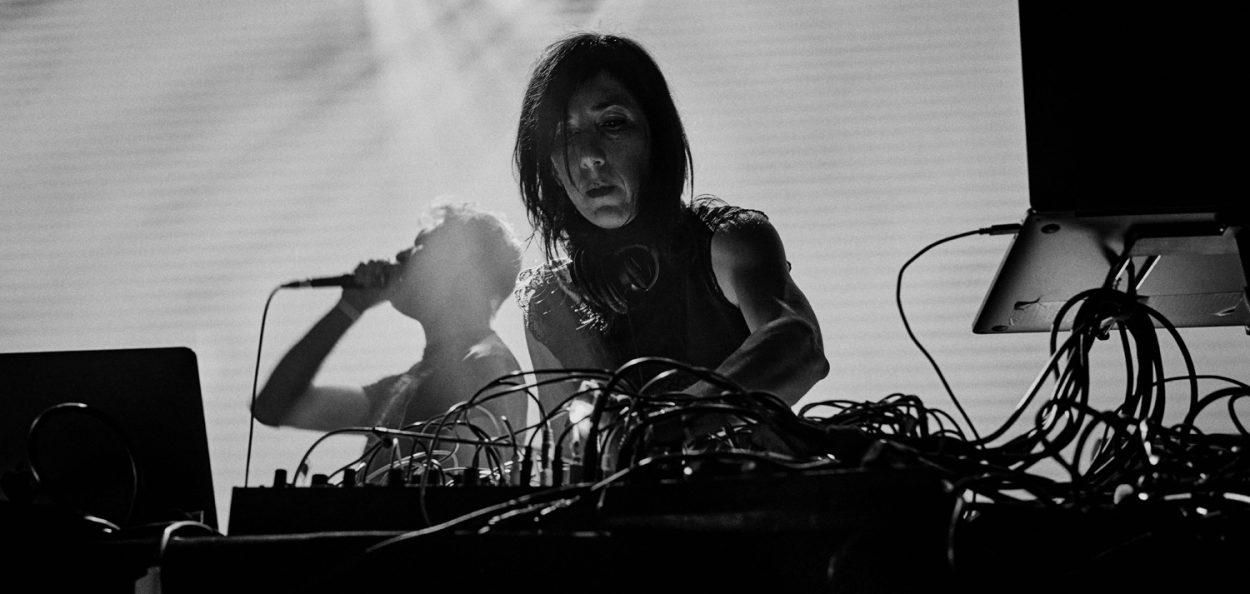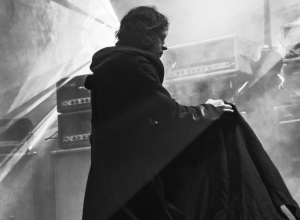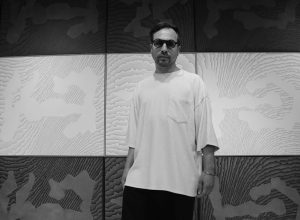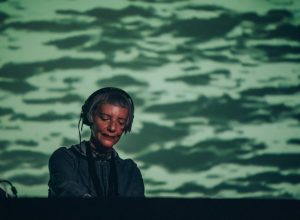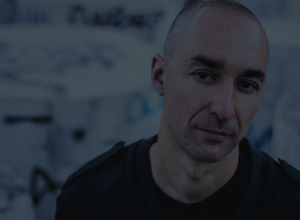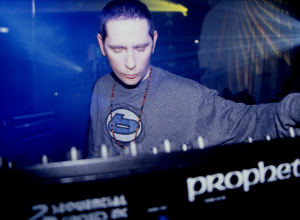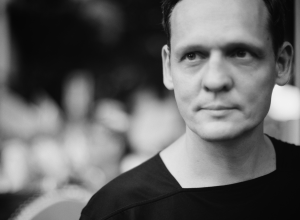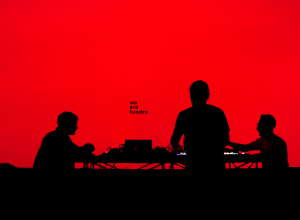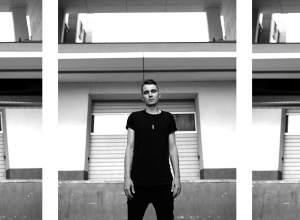At the twilight of 2023, a name most of us are well aware of reached a significant milestone in its overall career. Achieving their thirtieth year of existence under the banner of Orphx, Christie and Richard embarked on a European tour to mark the occasion, offering their audience a chance to also catch up with the project’s latest developments. Unseparated by their studio activity and productive results, their live performances or appearances remain a vital aspect of Orphx’s formidable identity, complementing each other and forming an unbreakable constant. Indeed, a proper way to end the year!
Orphx’s journey started as a group of three in 1993, under the pale late-autumn sky, between Rich(ard) Oddie, Christina Sealey, and Aron West. Hugely inspired by the proto-industrial sonic habitat and noise hues, they found a gap and developed, through experimentation and improvisation, a rhythmic setting among those raw and harsh environments. Heading to this newly discovered and, in a sense, unexplored territory, they produce a wide soundscape range through their numerous releases. Whether on stage or in the studio, each gathering could lead to unexpected accidents, mainly due to Orphx’s dedication and spontaneity.
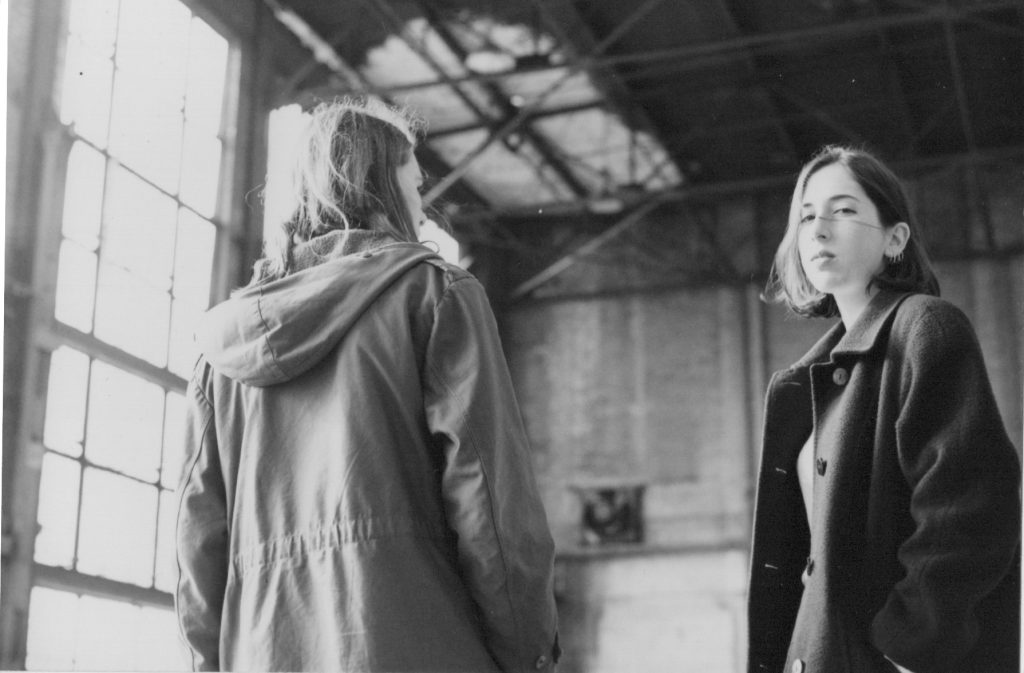
As their method and technique kept evolving using each era’s available technology, they shaped distinct transformations, as Rich describes below. Their restlessness and curiosity led to avoiding a creative settle-in, which has been the key to an enduring and impactful presence. Besides, though, all those that bring continuity to their endeavours, there are several core themes in pursuit. And these had been present from the beginning, acting as a ceaseless driving force. Nevertheless, where the emphasis and excitement reside is hard to contain in a few introductory words.
Since grasping and embracing their fundamental values right from the start, they keep expanding their artistic standards and venturing through even farther sonic territories. As expected, the members’ synchronized focus and affiliation with those ideas emerged Orphx as a leading figure in industrial and experimental soundscapes, a genre with an environment within which they feel most free. On a second level, the allure of this kind of sound to them was not just limited to its auditory qualities but also to the accompanying aesthetic and underlying ideology. This sense of exploration led to an unbounded pursuit of creative experiences and learning opportunities, with no fixed limitations on the potential outcomes and insights that could arise.
And so, given this opportunity, in collaboration with Christie and Richard, we made this special anniversary interview, commemorating their thirty years of artistic curiosity, free-form expression, and boundless music expeditions.
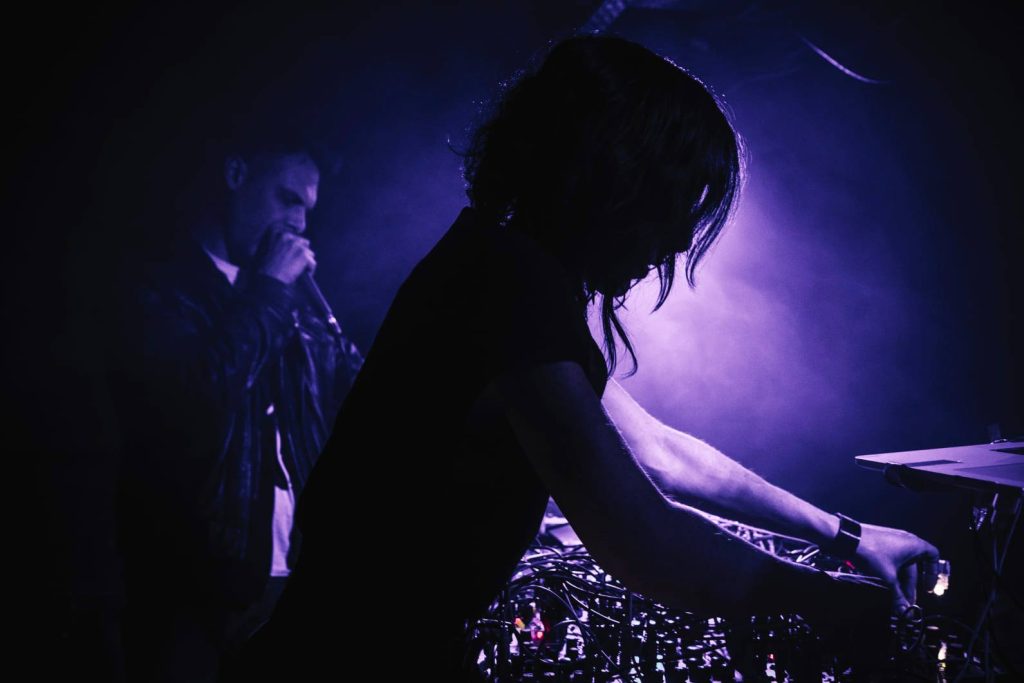
What is the overall purpose of the Orphx project, where does it come from, and how does it stand as a form of art and personal expression?
Rich: The project began as a way of exploring our love for experimental music and especially industrial music. Aron, Christie and I were all interested in both the music and the countercultural ideas connected to it. I think the critical dimensions of industrial music resonated with all of us. It took the refusal of punk further by really focusing on the dominant ideologies and pathologies of modern culture and the ways that our lives and thoughts are shaped by mechanisms of social control. We tried to create a sound that was overwhelming and hypnotic, ritualistic. I’ve always seen this music as a way of transforming negative energy and emotions: finding inspiration and strength from difficult experiences by channeling them into music and art. Improvisation and live performance have always been important aspects of the project as well and interconnect to this idea of transformation.
Can you describe a usual day before entering, during, and after the studio? Compared to its current status and how it was when you first started.
Christie: In the beginning we would always get together as a group, deciding ahead of time what instruments we would bring and what the goal would be for the session. Today we often work separately as well as together. On my own, I go into the studio to experiment with sounds or pull apart sounds or patterns from previous recording sessions. Depending on the time available, this may be less goal-oriented. When Rich and I are together in the studio we are often practicing for a show and we’ll often record improvisations while practicing that are later used in studio recordings. Because of the infinite possibilities that are afforded by recording on the computer, a lot more time these days is spent manipulating and structuring sounds after recording.
Rich: Another major difference between now and then is how much less studio time we have. Much of our time is taken up with touring and by other responsibilities that we didn’t have when we were teenagers. And of course have much more equipment to use than we did in those days.
Would you like to tell us a bit about your equipment to produce your sound? How did you implement the evolution of technology and its breakthroughs in what you do? Compared, of course, with any technical limitations in your early days.
Rich: In the beginning we used whatever was available to us. I had saved up some money for my first synth, an Ensoniq ESQ1, and a family friend passed on me an old Sequential synth. Soon after, I met Christie and she had a Yamaha SY55, which was very powerful and versatile at the time. Aron had an Atari computer that we used for some basic MIDI sequencing and I bought a used Fostex 4-track recorder to multi-track our sessions. His basement became our primary studio space and we began filling it with whatever we could find at pawn shops and thrift stores: tape machines, radios, microphones and contact microphones, a handful of effects pedals, power tools, and scrap metal scavenged from local industrial sites. Christie bought a couple of used reel-to-reel machines and learned how to splice the tape, create edits and tape loops, and to manipulate the tape manually for different effects. Not long after we started, I bought a friend’s Oberheim drum machine and then a Mirage sampler, which became another key tool for Christie.
For live performances, we used multiple 16 mm projectors, a slide projector, and strobes. These were the tools that we used for the first few years of the project. Later, during the late ’90s, I began using more software and as we started to tour in Europe we stripped down our set up to laptops, controllers and a few pieces of hardware: a synth, contact mics, shortwave radio, effects. This was easier for travel but also limited our ability to improvise, especially with the order and length of individual tracks. In the early 2000s, we began using Ableton Live and this allowed us to improvise much more. And in 2008, Christie started to explore modular synthesizers, which have now become central to both our studio work and our live sets.
Christie: I think that there has been a natural evolution in our instruments. In the early days we were limited with our budget but we were inspired by experimental musicians who had embraced the idea of using whatever was at hand so we weren’t as concerned about saving up for really high-end electronics. As Rich mentioned, in the late ’90s and early 2000s computers and software became a bigger influence on our sound, recordings and live performances. This led to a less hands-on approach and the frustration with this gradually led to a search for new instruments.
We both began looking back to analog synthesizers and drum machines. In 2008, I purchased a Frac Rack modular synthesizer system from a friend after becoming fascinated with the hands-on creation and destruction of ever-evolving sounds. The potential for experimentation and the control and shaping of sounds without menu diving was really inspiring. This really influenced the character of our sound and shifted our live performances back into improvisation and that sense of danger and risk that had been missing. However, neither of us has ever given up using computers for sound design or performance. I think that we just found a better integration of hands-on instrumentation and software. They both have their strengths and weaknesses and work well together.
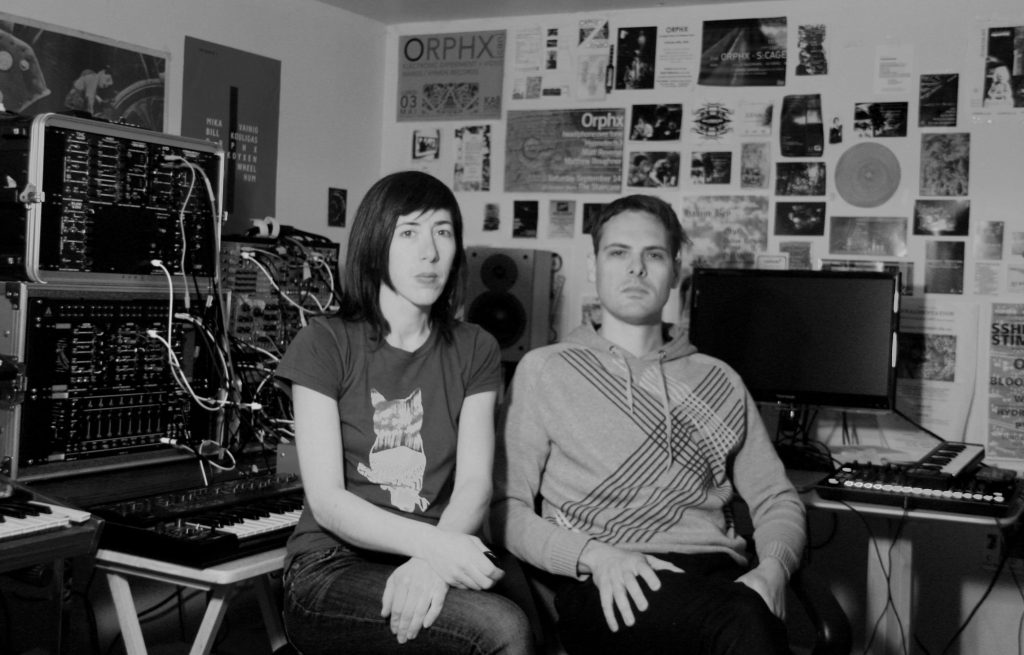
How would you describe your composition method and its evolution? There is variety in your releases, and obviously you are very fond of improvisation and experimentation.
Christie: Yes, early on and in more recent years improvisation has played a big role in our music. Some releases also have a stronger conceptual underpinning than others and this may influence the structure of the music or types of sounds. Experimentation has been a recurring theme as well: we’re both interested in exploring new techniques and tools, trying new approaches. In part, this may be because neither of us has had significant formal training in music and instead come from backgrounds in art and philosophy. We have had little concern for adhering to any formal musical structures or processes or for following trends.
Rich: From the very beginning, improvisation has been central. And this is still how we prefer to create music: improvising, recording the results and then editing. This is how we create most of our work and that is true of the other projects we involve ourselves with as well. When I was working solo on the studio recordings, between 1998 and 2008, I usually created parts of each track using software but I would improvise much of the structure in real time using hardware and/or software controllers.
Focusing on the latter, how did those (improvisation and experimentation) help you in the long term? Any exciting things you discovered even on a personal level?
Christie: There is a certain amount of letting go in an improv situation: listening closely and deciding what needs to happen for a positive shared outcome. Though this is easier said than done. There are so many “accidents” that happen during improvisation, especially in a live performance context, and recognizing the potential in these moments is so important. I hope that this process has carried over in some way to my personal life.
Rich: I think our enthusiasm for experimentation has kept us interested for all these years. Because we both love discovering new music, exploring new ideas and finding new ways of making sounds and performing or presenting music we are always finding something new to be excited about and inspired by. And the act of improvisation is continuously inspiring as well. When you are creating music in the moment with another person there is the potential to create something new and really lose yourself in the process.
The principle that Christie mentioned is such a powerful one: the idea that you have to listen closely and embrace the accidents. I often think about this as a wider principle for life: the importance of listening closely to other people, to yourself, and to the world around you. And the importance of trying to accept the mistakes and accidents that life throws at you and transform them into something that you can use and work with – or at least live with!
Your early rave influences have been prominent in your sound as Orphx since the beginning. How did this evolve mentally with you, and how was your approach or technique carried over and enhanced?
Rich: Rhythm has always been an important element but the original inspiration for the project was industrial music and there was no influence from dance music. Christie and I were both deeply into techno and acid house at this time, attending raves and discovering the styles and artists that would later inspire us, but it took a while for that influence to become prominent in the music. I think you can hear some of it on the Fragmentation album (Malignant Records, 1996) but it wasn’t until the Nullity 10” (Hands Productions, 1998) that I started to explore the idea of combining industrial and techno elements.
That combination has taken different shapes over the years, veering into electro-acoustic territory in the early 2000s, bringing in the dub techno and IDM influences in the mid 2000s and moving into a more stripped-down industrial techno from in the 2010s. More recently, we are turning back to some of our earliest influences and placing more emphasis on noise and experimentation again.
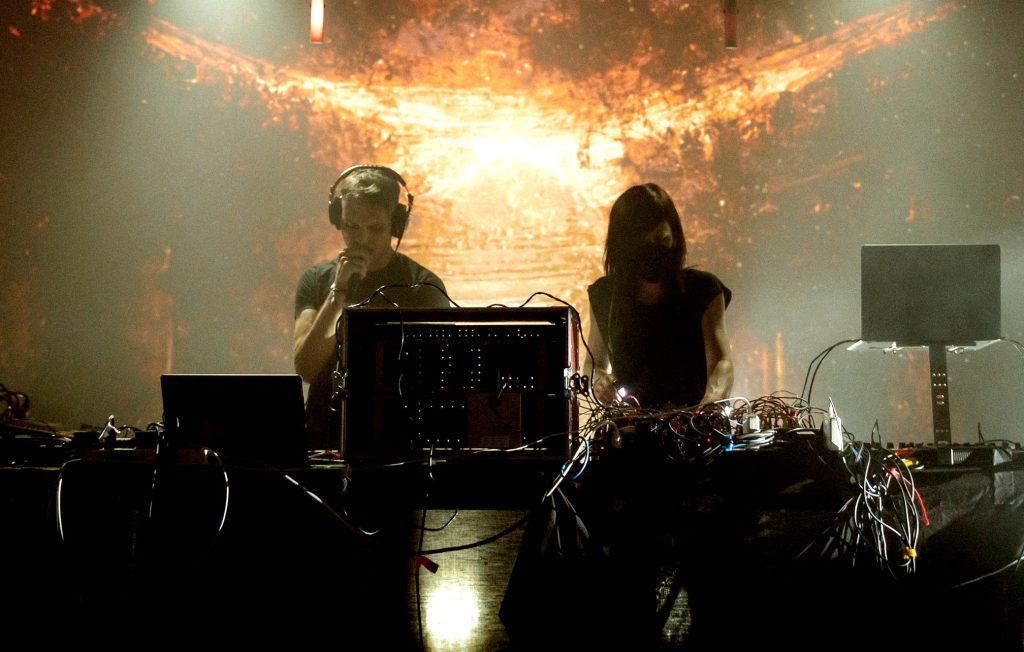
Would you consider it difficult to find a balance between your personal life and the symbiosis within Orphx?
Christie: My first instinct is to say that we keep those things separate but there are a lot of ways that this project crosses over into personal life. Touring is an obvious one and we have a number of close friends that we have connected with through our travels: other artists, promoters, listeners. The experience of performing and travelling to different parts of the world has also influenced my personal outlook and provided a lot of inspiration. I am also a painter and I find that the ideas and energy from creating music and performing influences my visual art and vice versa.
What do you think keeps it still interesting for you to continue making music with such passion and, allow me to say, aggressiveness? Does your first vision still carry on effectively through this project?
Christie: I think that the continuity over the years is the search for a creative experience that takes hold of you and that you can lose yourself in. The original expression was catharsis. While we are not the same people we were in our teenage years, I think that theme runs through all of our work, especially in more maximal tracks and moments in live performance when we build up multiple layers of rhythms with heavy drones and noise.
Rich: Yes, catharsis and ekstasis: trying to create an experience that takes you out of yourself, out of the everyday. Making this music is a kind of therapy. It’s a way of processing difficult feelings and experiences and letting them out and letting go of them, at least in that moment. So that is part of the motivation and the experience of sharing that with an audience is something really special and powerful. I think that is part of what keeps us going and keeps us inspired, along with the search for new ways of creating sounds and composing music and presenting it in new contexts or through collaboration with other artists.
Can you tell us about the themes you explore and whether you have the audience in mind for such messages? Does their relevance play a role in your establishment as an act, or does this establishment come from something else?
Rich: I think we’ve covered the core themes: catharsis, ekstasis, and the idea of gaining insight from looking at the hidden or shadow aspects of one’s self. That is what has always attracted me to industrial music and other transgressive forms of art: the idea of shining a light on aspects of modern culture that are hidden, overlooked, or unacknowledged. Those themes are reflected in many of our titles and samples and those references are there for people to investigate further if they choose. But, ultimately, they are there for us as sources of inspiration for the music.
It might be a simple question, but do you consider your music an act of rebellion? If that’s the case, how do you see that manifesting?
Rich: I think it often expresses a spirit of rebellion and actual acts of rebellion and resistance to oppression are often a source of inspiration.
Looking at your Bandcamp profile, one can find many live recordings. But, what really caught my eye was Primordial State, a live archive from 1994-1995. What made you collect and release this archival collection? When you hear it now, what are your thoughts and feelings?
Rich: I wanted to start releasing more of our live recordings from the last three decades and started at the beginning with Primordial State. It’s a kind of companion or prequel to the Fragmentation box set that was released on Hospital Productions in 2020 as it includes a lot of material from our earliest performances that was later developed into the Fragmentation album. It was a real pleasure to put together both of those releases. There was a special energy at that time when we were still discovering and exploring experimental music and figuring out how to create it ourselves. It was inspiring to tap back into that energy and relive some of those memories.

How did you step into the industrial scene back then and what were your thoughts, feelings, and course of action? What were your main concerns and evaluations, compared to the present?
Rich: In the beginning, we had interest in using sound and visuals to create an overwhelming and surreal atmosphere. Like the industrial artists that inspired us we wanted to disrupt and disturb the audience and much of the visuals that we used at the time were very harsh: wounded, diseased and malformed bodies, car crashes, autopsies. This was mixed in with more abstract and psychedelic imagery but the overall atmosphere was very dark and morbid.
This emphasis on pathology was a reflection of our interests and mental states at that time and we also saw this as a part of a tradition of confrontational art. Aron and I were especially enthusiastic about provoking the audience and we tried a number of different ways: rotten meat, burning shit on stage, exploding television sets. While darker themes have run throughout the project, over the years we’ve shifted to trying to connect with the audience rather than alienating or assaulting them.
Thirty years is a period with many changes on personal and collective levels. How do you maintain your taste, preferences, and interests in ever-changing surroundings?
Christie: I think that our tastes, preferences and interests are always changing. Those changes in our interests and techniques have been integrated into the music with subtle shifts rather than sudden leaps and that has allowed us to cross genres rather than jumping from one scene to another.
Coming over to your live appearances and aligned with your focus on improvisation and experimentation, how do you set up your performances? What is the most enjoyable and significant part of such an activity, and did it remain there steadily?
Christie: Our live performances have a mix of studio material that we rework and new material that we create on the spot and may never be repeated. For me, the most enjoyable part of live performance are the points when we have deviated from a song structure and are exploring something new that comes together in the moment and is felt and appreciated by the audience.
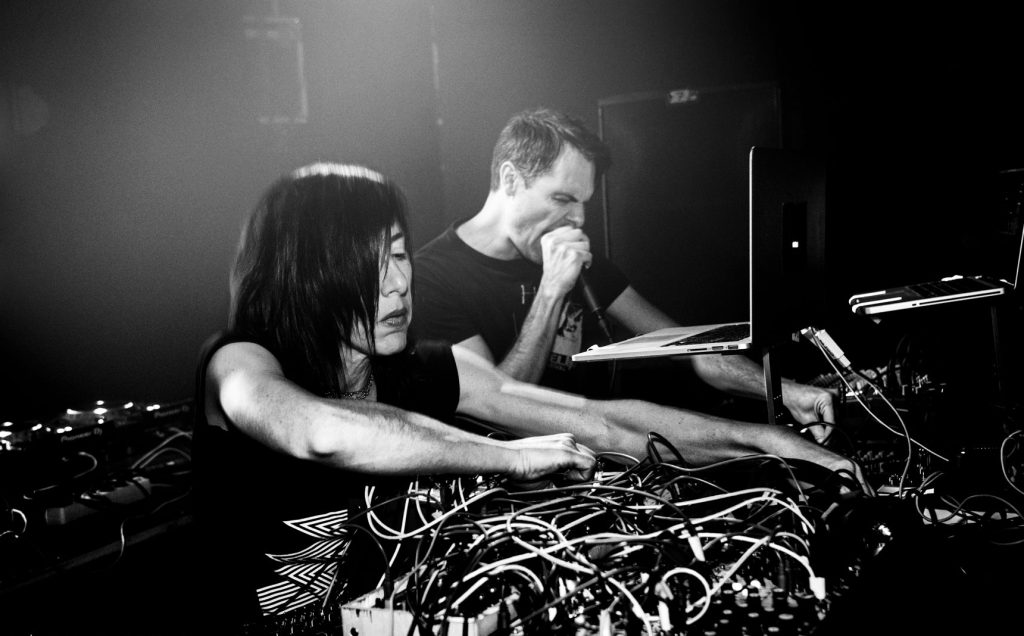
Do you ever feel nostalgic, or would you preferably consider yourselves visionaries?
Rich: I think we are both always seeking out new music and other forms of art, and thinking about ways to develop what we are doing in this project and others. I certainly have moments of nostalgia but it’s more about staying connected to that teenage energy, inspiration and enthusiasm and bringing it into the present.
With a look to the future, what else remains for Orphx? Would you ever consider focusing more on audiovisual performances, supported maybe by new technology or combining your music with other forms of artistic expression?
Rich: That has actually been a major focus for us over the last few years as we’ve been collaborating with the LIVELab research centre at McMaster University in Hamilton on audio-visual performances that explore new technology and the cognition of music and sound. Working with video artist Patrick Trudeau (aka Diagraf), we developed a special performance that utilizes infrasound (sound below the threshold of human hearing) and we’ve presented that at LIVELab and the Mutek festival in Montreal. During the LIVELab performance, they studied how audience members responded to the infrasound and they published their results earlier this year. We are just starting to work on a new performance and study with them for next year.
Christie: We would also love to have the opportunity to create sound for film. I think this is something that is quite difficult to do but can be so transformative when done really well. It would be great to have that challenge.
